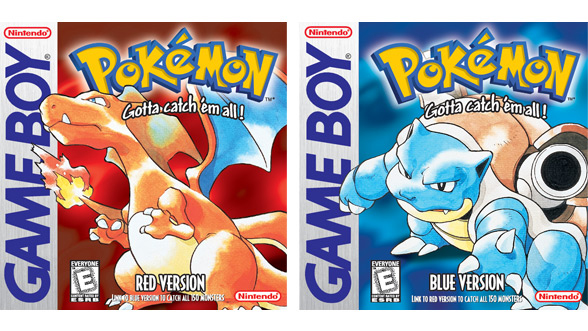When Pokémon Red and Green (internationally Red and Blue) released to Japanese audiences on February 27th, 1996, the team that developed the games had no idea exactly what would happen next. How could they ever expect their little Game Boy experience to become a global phenomenon worthy of having its release marked and remembered by its fans over two decades later? But this fanbase is in a bit of a mess at the moment. Its original fanbase has begun to age away from it in favor of more complex and large scale games; its second wave audience is dissatisfied with the franchise’s development direction; and for the actual target audience, the competition is both extremely different and larger than ever.
Despite this, when Game Freak steps up to release yet another entry in the juggernaut series, these entries continue to carry with them a large amount of the same designs and aesthetics. Fans online loudly question why yet again the series hasn’t adopted ideas from more recent games and radically departed from the extremely familiar, and even the most reliable fan can admit that the series doesn’t deviate too much from the roads well-traveled. This is a struggle many long-running franchises end up running into, but the reasons Pokémon finds it a fight worth having go back to its original releases and what exactly makes them work.
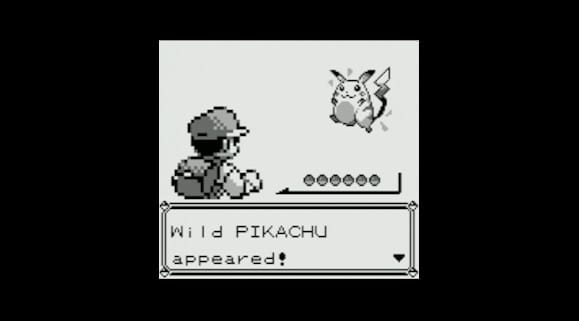
Knowing History
Tsunekazu Ishihara: “I was surprised someone with such a huge collection and so much knowledge existed. He even had circuit boards that were meant for commercial use, and he was making his own cables that could harness circuit boards. His passion was unmatched! (laughs)”1
Before Game Freak was a development studio, it was a fan-published game magazine. Published by eventual Pokémon creator Satoshi Tajiri, Game Freak the magazine was much like fan channels and small game outlets are today—a place to celebrate the medium and to learn more about how games are designed. Tajiri himself had a reputation as being particularly knowledgeable about the history of video games, even while they were still relatively in their infancy as a medium. That background combined with actual technical skill and familiarity with arcade machines would eventually open the doors to him actually joining this medium he was so passionate about.
Tajiri would be recruited by future Pokémon Company International head Tsunekazu Ishihara at first to help develop a TV series about video games, but before long they and Game Freak cover artist Ken Sugimori would begin conceptualizing the idea for Pokémon after looking at another Game Boy RPG, The Final Fantasy Legend. The longer that they spent working on the idea, the more the idea ballooned, and it became clear this would be a long journey to complete.
Instead of diving headfirst into developing the games, the small Game Freak team would first take on smaller, extremely different projects at Nintendo, all with the goal of obtaining the cash and resources they needed. What they ultimately got was an experience. The team got to work with the beloved Mario franchise, developing Yoshi and Mario & Wario for the NES. While the games weren’t remotely close to what they wanted to make, Tajiri would later say in a 2000 interview (which has been a treasure trove of information for this piece) that the development of both games were critical to the future development of Pokémon. The team was learning even more about the history of games while beginning to make their own. This knowledge of the history of games before them and the games they made prior to Pokémon to settle on exactly what it would take to make their passion project just right – structure.
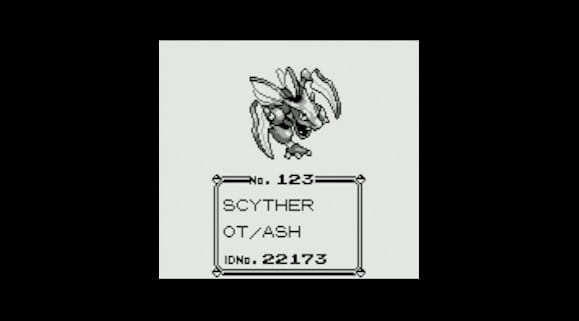
Rock Hard Structure
Satoshi Tajiri: “The approach to making a game like Yoshi was so different from Pokémon. With Pokémon, we wanted to make a great game based on our own ideas. On the other hand, with Yoshi, we were tasked with developing a game in six months using a character that already existed. I felt like there were a lot of benefits to accepting the job of working on Yoshi—even though developing games like Yoshi were completely different, in my mind, it was necessary to the eventual development of Pokémon.”1
This is not a new revelation, but Pokémon Red and Blue are Japanese Role Playing Games, a subset of the role-playing genre defined mostly by either extremely Japanese tropes or extremely familiar mechanics. Pokémon naturally fits into both categories. From the inspiration of The Final Fantasy Legend, the team at Game Freak knew they wanted to make a game like it, but weren’t so interested in borrowing from it wholesale. Tajiri and the rest of Game Freak had a strong understanding not just of the genre’s history but also now the hows and whys of development at their disposal, and it’s applied lavishly all over Red and Blue.
Advertisement
Most obviously, the games use a turn-based battle system. There’s plenty of love and hate to be had for this system as a concept, but its use here is critical. By putting players in an untimed environment with all the information they need to make crucial decisions without pressure, the games are quite accessible even if they feel much less engaging these days. Red and Blue’s battles are much more like an old-school text adventure than anything dynamic and filled with action—something the later games would change—but it helps ease one’s focus, something not worth writing off for a game targeted at kids. The limitations on moves to four per Pokémon help diversify that text adventure further, allowing for some very early era customization. It’s not clear whether or not Game Freak really wanted their combat to be like a text adventure, but that’s the vibe it gives off nonetheless.
Red and Blue also lean into more traditional RPG experiences, eschewing the often high stakes of its contemporaries in favor of focusing on the aspect of adventuring itself to motivate progression. It’s true that when taking the overhead view the mainline games feel very linear, but zooming in, the player is taken on a crafted journey, not unlike something a dungeon master would map out for a D&D party. The player character is at first motivated by a desire to leave their small town because there isn’t much to do there, and once out in the world, they are given one interesting piece of info from an NPC that points in a direction, and the pattern continues throughout the rest of the game. The closest thing to an antagonist the games have is the rival, and even then while he may be a jerk, he’s not a threat; just a roadblock.
These more traditional structural pieces were well-worn before they were deployed for Red and Blue, but they’re fundamentals for a reason—they work. They motivate the player to continue through various points of interest and new things to discover. With these building blocks, Game Freak was poised to add the last special ingredient that makes Pokémon stand out as a franchise.
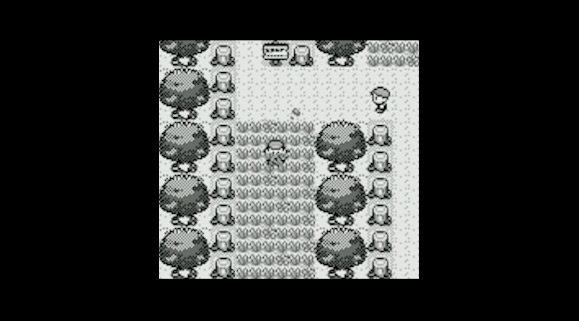
Going Home Again
Tajiri: “Pokémon will always be about my childhood. I think adults and children see the world differently, so I wanted that to be reflected in the game. That’s why in Pokémon you never see things from the adults’ perspective. When I was a kid, I really hated being called ‘squirt’ or ‘little boy.’ Maybe that’s how adults saw me, but I felt like I was more than just a kid. That’s also a theme in Pokémon. That’s why the protagonists in the games are on the same level as adults, even though they look down on them. But when you can defeat them in a battle, they start to view you differently. That happens a lot in the game as you gain recognition and continue to grow. That’s all from my personal experience, and I later realized that’s something all kids around the world experience.”1
Advertisement
Satoshi Tajiri wasn’t just inspired by a Game Boy RPG to conceptualize Pokémon. Plenty of inspiration came from far outside video games. Growing up in a rural area of Tokyo, Tajiri’s childhood was filled with adventuring in the fields around his home, collecting insects and crawfish. To him, they felt alien and brand new, and would be a hobby of his right until video games would supplant them. Nonetheless he’d retain those memories and they’d directly inspire the design of Red and Blue. Despite being somewhat younger than his teammates, Tajiri’s experiences were familiar to them as well. A filter of nostalgia began to form over the game as the early areas of the Kanto region became rural small towns, fields, and forests.
As the player journeys to more populated and adult areas of the region, they come across all sorts of more complicated “grown-up” situations, but always filtered through that desire to see them like a child again. Each encounter with Team Rocket reinforces the more unshakeable determination of youth against what would in other games be considered mature themes. These decisions are definitely not complex, but they do set the stage for the team that would come in to help Game Freak accomplish their dream.
After releasing Earthbound (known in Japan as Mother 2), the development team at Ape, Inc behind the underrated classic were dismantled, with some members of the team brought onto the Pokémon project as a new team, Creatures INC. Later, this company would itself evolve into The Pokémon Company International and help steer the brand overall. With the experience of Mother, the Creatures team was perfectly poised to lean into the nostalgia that the entirety of Red and Blue would be soaked in. Concepts from Earthbound would worm their way into Pokémon: in the English beta version of the game, the protagonist was named Ninten2, both named for the company that would publish the game (with the rival named Sony), it also served as a reference to the hero of the original Mother that Ape also worked on. The protagonist would also inherit some designs of Ninten and Ness’ overworld sprite, along with losing his father just like Ness.
Much like the goal for Red and Blue, Earthbound carries a certain saccharine nature hovering over its aesthetic. They both kick off in small rural areas and all it takes is some youth’s antsy curiosity to kick off an adventure. The adults of their worlds aren’t always in sync with what’s actually going on around them, leading the children to step up and show their elders what they can actually do; and in the end ultimately they end up just going back home to rest. With Earthbound paving the way, Pokémon could make players excited to explore a new world and feel homesick at the same time.
Advertisement
And it worked.
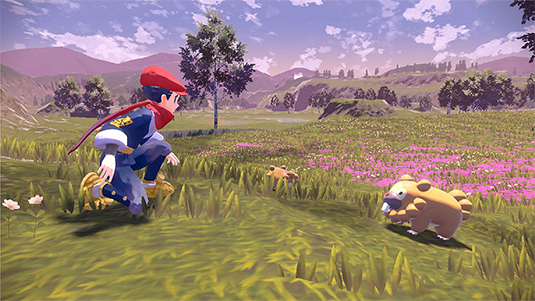
I Got To Get Away
Ishihara: “…The setting for Pokemon was the Kanto region of Japan. Basically, it’s a place with the ocean to the south, mountains to the north, and an area like Tokyo Bay where you can explore. If it were America, it’d be a place like Florida or a peninsula in California. We were searching for places like that. If you look at a map of the world, there are lots of places that fit the geographical description of the Pokemon world. Like an image that looks the same even when you look at it from different angles — it looks like it could be anywhere in the world.”1
Tajiri: “And not just geographically. Like in the game when you leave your room and walk downstairs to see your mom watching TV, and she tells you some exciting news, or when you get some new device. That feeling of having your whole world change is universal — it’s felt by kids all around the world. That’s why without changing the map to look like America, American kids still feel like they’re playing in their own regions, imagining ‘I wonder what kind of story that area has.’ I looked up this thing called a Greyhound. It’s a bus in the US that’s been around since the 1950’s that travels all across national highways. There are lots of young adults who travel around the whole country once they turn 18. So I thought, ‘Yup, that’s exactly how our Kanto region feels.’ It fit perfectly with the feeling we were trying to create.”1
From the moment we gain the ability to look outside our immediate environment, there’s a desire to go beyond those boundaries and experience something more; whether we go to college out of state, go on vacation, move as far away from home as we can, or pack up and live out of a van. Red and Blue captured this desire to explore and discover the world around us and ourselves in a way that’s almost difficult to explain, but easy enough to feel. The Pokémon changing and becoming more diverse as the journey goes on and on continues a desire to progress naturally while providing milestones in the form of Kanto’s gyms. These days, it’s pretty easy to take for granted. “Go fill the PokéDex” is the mission statement, but in the original games, the simple act of discovery was potent.
This is also probably why both the fanbase and the franchise have matured and strained against the bubble of the series’ trappings. Older players do want a larger world to allow them to discover and be surprised all over again, unaware that they now are the adults whose perspective Tajiri didn’t want to represent in the game. The games themselves, on the other hand, are forced to use smaller and finer tuned modifications to their gameplay, polishing the diamond in the rough. Red and Blue were ground into diamond dust in an attempt to stay engaging to the children decades removed from Tajiri’s own childhood.
In the 25th Anniversary week’s reveal of Pokémon Legends: Arceus, the potential for a solution to this dilemma presents itself. Legends is immediately nothing like a mainline Pokémon has ever been—even at first glance—seeming to finally acquiesce to the older fanbase’s demands desires. Looking at it further, the classic energy of the series still rings true in this new entry. Battles will still occur in a way that is friendly to all ages. the player will fill the shoes of a restless youth, and the driving force will be to explore a new version of an old location—giving players a brand new way to discover and explore without letting go of the series identity. Legends is still at least a year away, but the folks at Game Freak are clearly looking forward to innovating a long-time future of their beloved little idea.
In Pokémon Red and Blue, an entire generation of gamers were introduced to some of the foundations of role playing game design, inspired by a magical world, and validated simply for being children. These design choices cut through cultural, generational, and eventually media boundaries to become itself a cultural institution. For better or worse, sticking to those foundations have kept it that way for 25 years, and likely twice as many to come.
1 Interview: Tajiri and Ishihara on Pokemon’s Beginnings [Written by Dr Lava • November 25, 2020] http://lavacutcontent.com/satoshi-tajiri-ishihara-interview/
2Default player and rival names – Bulbapedia [Source acmlm.kafuka.org]
Advertisement

